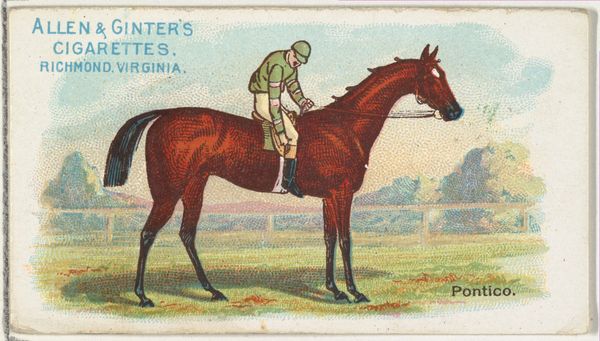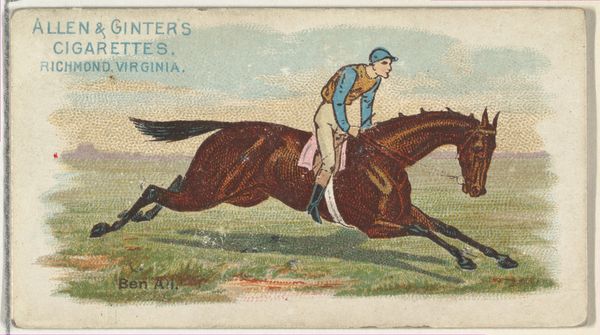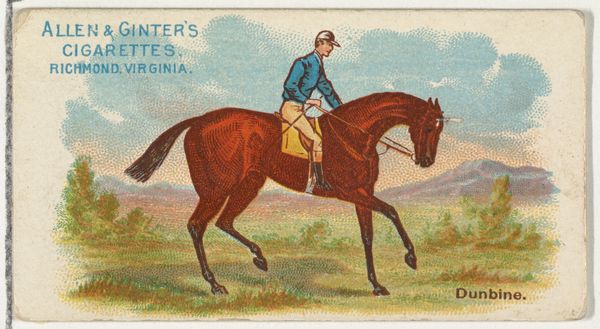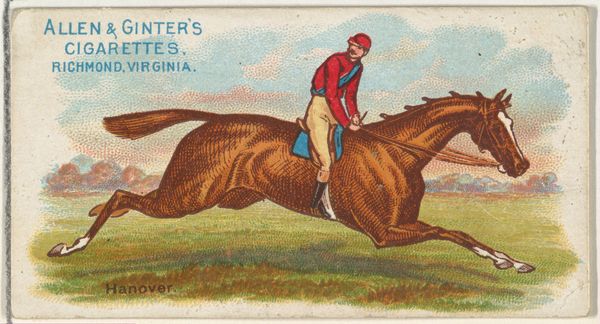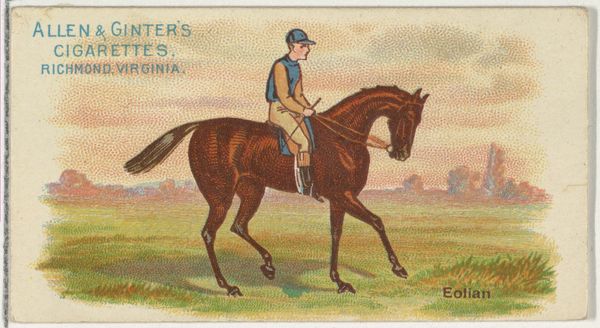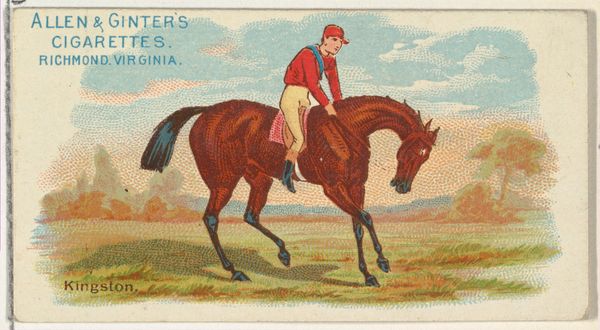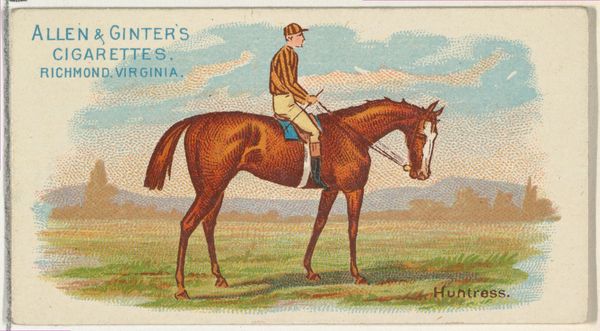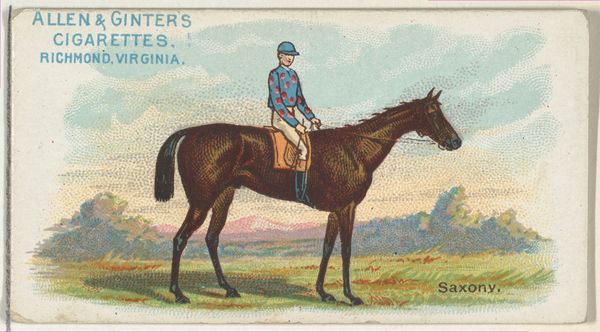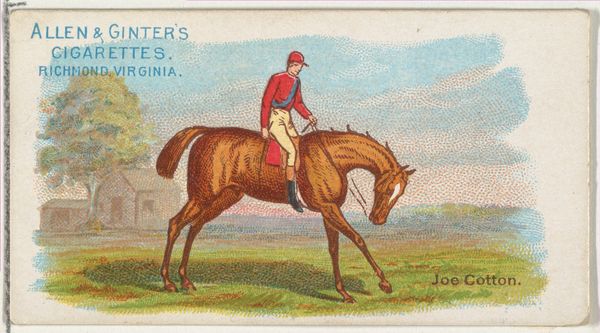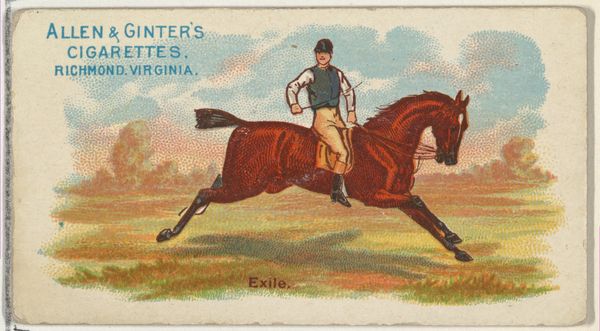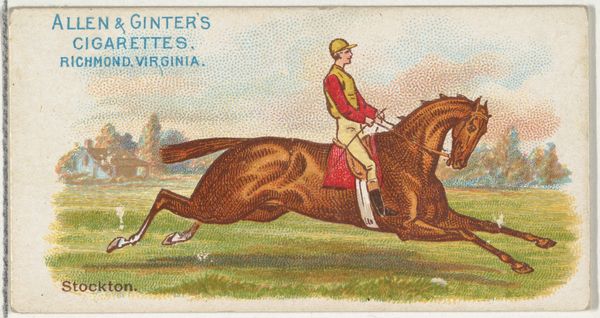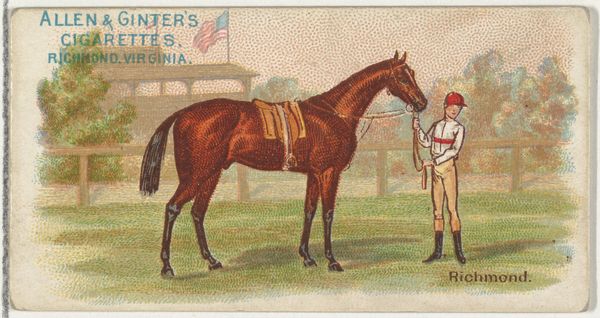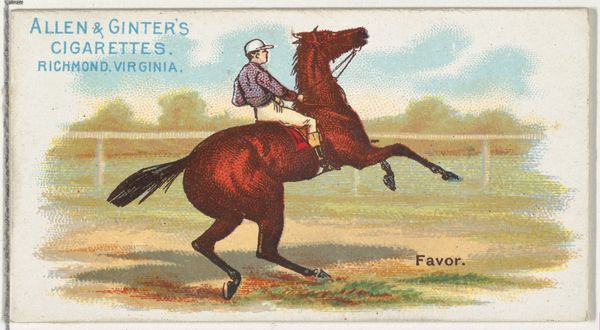
George Oyster, from The World's Racers series (N32) for Allen & Ginter Cigarettes 1888
0:00
0:00
drawing, coloured-pencil, print
#
drawing
#
coloured-pencil
# print
#
impressionism
#
caricature
#
caricature
#
coloured pencil
#
horse
#
men
#
genre-painting
Dimensions: Sheet: 1 1/2 x 2 3/4 in. (3.8 x 7 cm)
Copyright: Public Domain
Editor: Here we have "George Oyster, from The World's Racers series," a color print produced in 1888 for Allen & Ginter Cigarettes. I find the impressionistic rendering of speed fascinating for such a small format. How do you interpret this work in its historical context? Curator: It’s interesting to view this through the lens of the burgeoning advertising industry. These cards, inserts in cigarette packs, served less as high art and more as promotional material—early examples of what we now call consumer culture. How do you see the "World's Racers" theme playing into the branding? Editor: Well, racing, particularly horse racing, had a real cultural cachet at the time, a marker of wealth and leisure. So linking it with cigarettes suggests sophistication and pleasure. Is it fair to see it as social aspirational marketing? Curator: Exactly! And note the location, Richmond, Virginia, prominently displayed. Post-Reconstruction, this area still traded heavily in tobacco, so even the locale reinforces economic and social power. Do you see any tension between the accessibility of these cards and the exclusivity of the portrayed subject matter? Editor: I do. These cards offered a glimpse into a world that most people couldn't access. It seems like the appeal was less about reality and more about fantasy, the ideal lifestyle associated with wealth. Almost like modern-day social media influencers. Curator: An excellent point! By circulating images of this privileged world so broadly, the manufacturers simultaneously reinforced its allure and somewhat democratized access to its symbols – creating, or bolstering, a mass desire. Think about what this says about image making and influence. Editor: I see this humble little print differently now, not just an image, but an artifact shaping consumer dreams and reinforcing societal structures. Curator: Precisely! The history of art is not always about grand canvases; sometimes it’s hidden in the smallest of everyday objects, revealing the intricate connection between art, commerce and social dynamics.
Comments
No comments
Be the first to comment and join the conversation on the ultimate creative platform.
